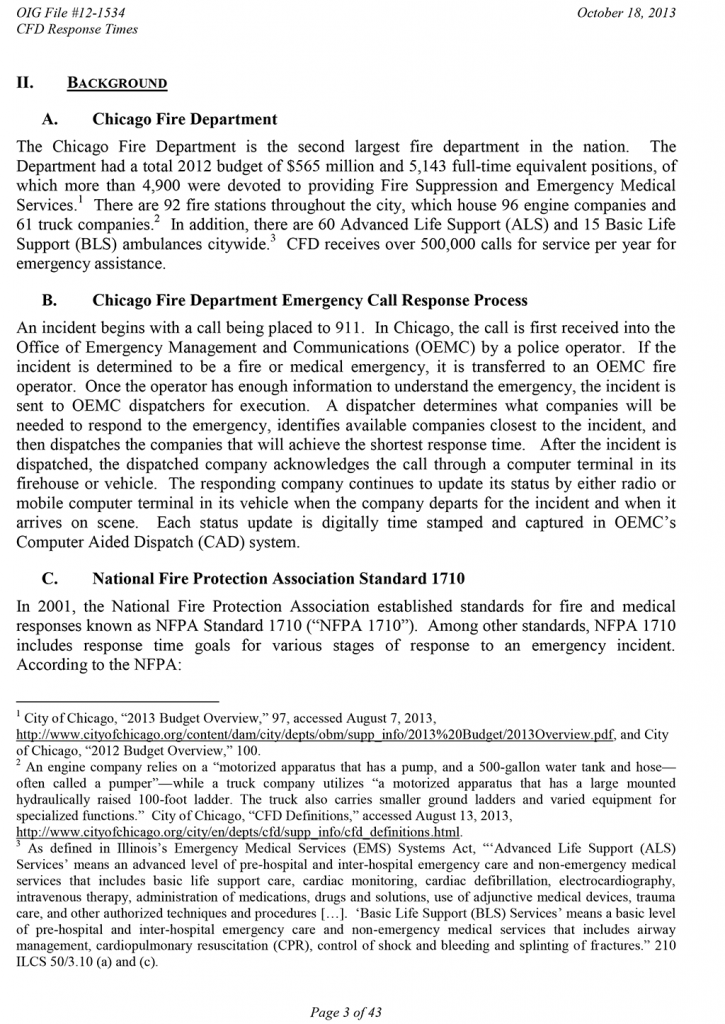


Here is a link to the complete report
thanks Bill
Tags: audit of Chicago Fire Department response times, Chicago Fire Department, Chicago Office of the Inspector General, National Fire Protection Association
This entry was posted on December 9, 2013, 2:01 PM and is filed under Fire Department News. You can follow any responses to this entry through RSS 2.0. Both comments and pings are currently closed.

For the finest department portraits and composites contact Tim Olk or Larry Shapiro.
Arclite theme by digitalnature | powered by WordPress
#1 by Jim on December 10, 2013 - 11:34 AM
Why not use the inspector generals own data and recommendations to your advantage? It seems that the elimination of the 5 man company is something the city wants but the data shows that the companies are not reaching the calls in the recommended amount of time. This shows that there are not enough companies. Why not compromise and reduce some companies to 4 man in some areas and take the manpower from the reduction to staff additional apparatus and ambulances in the busy areas? The city would have less of an argument then.
#2 by Scott on December 9, 2013 - 11:14 PM
Drew, I read the entire report, interesting read.
My understanding of CFD policy is no additional companies sent when co’s are on a variance. Only additional is when the Batt Chief or whoever is in command upgrades the alarm or calls for a special (extra trk, etc). Still alarm response still 2 Eng’s, 2 Trk’s, B/C. Working fire, Rit TRK, RIT B/C, Amb, EMS Field Officer, Command van, Sqd.
There are a few responses that the CAD has 3 eng’s and occasionally the alarm office (OEMC) may send an extra company based on what location of the call and where that company may be at, but it is not a policy but discretion.
#3 by Drew Smith on December 9, 2013 - 10:58 PM
Staffing will only affect response time if because of reduced staffing on each company more companies must then be sent to each incident and therefore fewer total companies remain available for subsequent calls. I plan to read the whole report over the holidays and see what I may learn. Without having read the report the first question that comes to mind is this: If there were more EMS companies (both ALS and/or BLS, transport and non-transport) that use two or three-person crews and are not engines, trucks, or squads how might not only response times be improved but the effect of increased company availability for non-medical incidents?
While I am on the subject, how is the effect of reduced staffing on those companies operating each day on a variance? I have been told that as many as 30 percent of companies may be on this variance per the Union contract. If four engines are due on an alarm but two are on variance is there a fifth engine sent to compensate or do they just make do?
#4 by Scott on December 9, 2013 - 3:10 PM
Don’t confuse the wishes with the facts… “those are not the droids you are looking for”….
#5 by 0.02 on December 9, 2013 - 2:46 PM
That’s funny. This is the same inspector general that says reducing manpower on fire companies isn’t going to affect responses or response times. So what is it? Because by reading this, to me it means you need more fire companies not less and under manned companies.